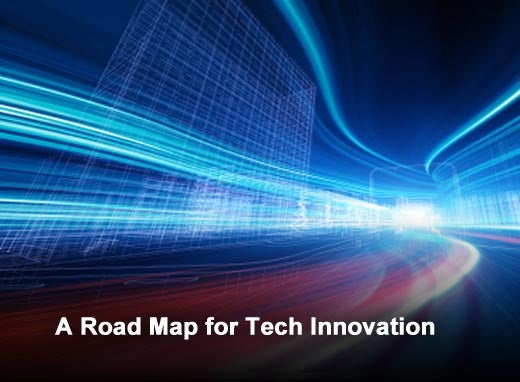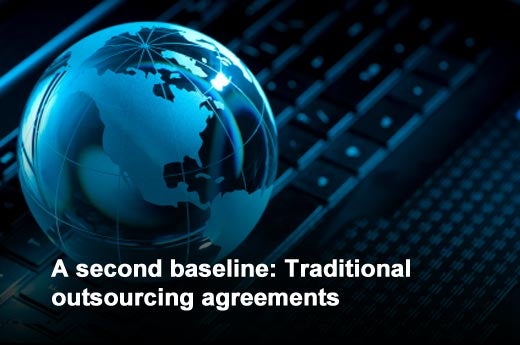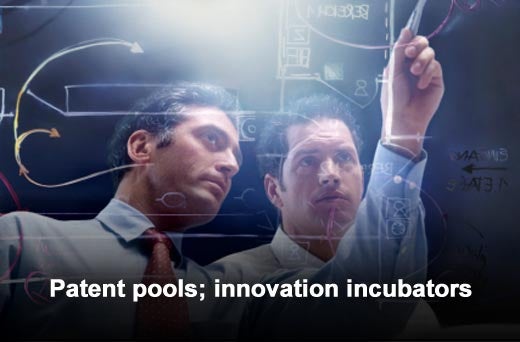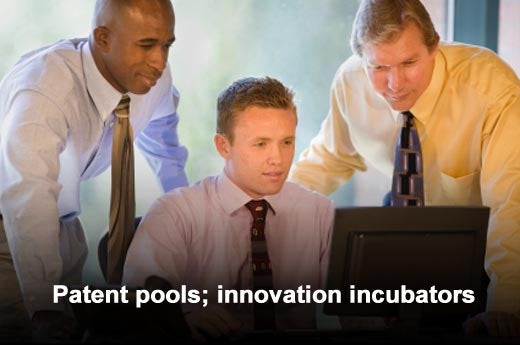In recent years, the pace of technology and business change has rapidly increased, requiring new commercial models and changes to the existing models. Companies – all companies, not just technology companies – must now regularly update technology across their entire organizations and customer-facing services and products.
Successful technology projects boost revenues, distinguish a company and its offerings from the competition, and transform and improve a company’s relationships with its customers. Failure, on the other hand, can have a profound impact on product development, customer service and market reputation for years to come. Consequently, planning for technology innovation and deployment projects requires careful mapping of strategic objectives, deliverables, and realistic work-around options.
Laurence Jacobs and Nicholas Smith, partners at Milbank, Tweed, Hadley & McCloy, have identified a variety of transaction structures that companies can use to develop new technologies and to leverage existing infrastructure, technologies, and customer bases. They have also focused on the relative strengths and weaknesses of these models in fostering technology innovation and best practices when designing and managing a project to develop and deploy technology or technology services.
Click through for best practices companies can use to develop new technologies and to leverage existing infrastructure, technologies, and customer bases, as identified by Laurence Jacobs and Nicholas Smith, partners at Milbank, Tweed, Hadley & McCloy.
Perhaps the most intuitive approach to technology innovation is for a company to undertake innovation projects using its own employees and other in-house resources. There are many positive aspects of this traditional approach:
- the company has full control of the project and can ensure compliance with company protocols and project work plans;
- the company retains all the upside of a successful project;
- the company can gain a competitive advantage by achieving vertical integration;
- the company can customize project work activities and technology specifications to whatever degree the company deems appropriate; and
- the company avoids having to manage a relationship with a third-party service provider or strategic partner whose interests are not fully aligned with the company’s.
There are, however, some significant disadvantages to undertaking a technology innovation project as an in-house matter:
- in-house development and deployment of new technologies can be costly and slow;
- if the new technology is found to be useful in a product or service outside the company’s established offerings (or outside the needs of a company’s existing customer base), the innovating company must then develop new products and customer bases to monetize the innovation;
- it is often difficult for a non-technology company to compete for the best technology resources at competitive rates;
- the ability of a company to customize innovation efforts can actually become a disadvantage if the company indulges excessive customization requests (resulting in delays, more complex and high-risk deliverables, and project cost overruns);
- a company going it alone must bear all the risk of a delayed or failed technology development effort; and
- intensive involvement in technology development is often an unwelcome distraction from core business activity.
Against this backdrop, we turn to a variety of transaction types that foster technology innovation while mitigating the downside risks and costs associated with technology development projects.
In a traditional outsourcing agreement, the customer relies on a service provider to provide the relevant expertise to implement technologies outside the customer’s core functions. Outsourcing is a proven and powerful tool to achieve cost savings and the standardization of technology across an organization, but the outsourcing model has some notable deficiencies when evaluated as means of driving technological innovation:
- Outsourcing agreements typically feature detailed descriptions of services and related technology as a way of ensuring that cost savings will be achieved while maintaining services of acceptable quality. For that level of detail to be possible, the relevant technology must already be available in the marketplace at the time the outsourcing contract is negotiated. The focus, then, really is the efficient implementation of a proven technology, not technology innovation.
- Outsourcing arrangements are rarely structured to incentivize innovation. Service providers want to retain sole ownership and control of as much technology as possible to leverage across their customer base.
Sometimes, the most expedient and low-risk way for a company to gain access to innovative technology is to buy a company with an innovative technology. A recent high-profile example of technological innovation via acquisition is Facebook’s recent $1 billion dollar acquisition of Instagram, maker of a photo-sharing application. Facebook faced two key challenges regarding photo sharing in its core business: increasing competition from other photo-centered social media services, such as Pinterest; and the growing market perception that Facebook’s mobile experience was clunky and not improving despite Facebook’s efforts to improve it. By acquiring Instagram, Facebook addressed both issues in a single stroke and bypassed future in-house development efforts. Facebook has subsequently made a smaller acquisition of Face.com for the same reasons.
Technology innovation via acquisition can have a quick and significant impact, but it has its own set of challenges. First, the acquirer must complete complicated and detailed work post-acquisition to integrate the acquired technology with the acquirer’s technology. Second, the acquired technology can underperform or be riddled with unforeseen liabilities, such as burdensome customer service contracts. Due diligence and strong post-acquisition project management can help mitigate these risks, so in the right circumstance the acquisition of strategically valuable technology on an accelerated timeline can be a critical tool in overall technology development strategy.
Many companies foster technology innovation by forming joint ventures with other companies with complementary technologies. The joint venture model addresses many of the challenges associated with in-house efforts and outsourcing transactions:
- joint venturers can share costs and risk of particularly large, complex, and expensive technology development projects;
- joint venturers can play to their strengths while shoring up weaknesses by leveraging the expertise of another party; and
- the joint venture structure creates a shared economic interest to encourage joint venturers to make and to share their best efforts.
The most fundamental characteristic of a joint venture – the shared economic incentives, costs, and risks – goes far in establishing a framework that encourages innovation and sharing. That interests are shared in this manner, though, should not be seen as a panacea to overcome whatever challenge comes the joint venture’s way. Joint ventures also have significant drawbacks that a company should consider and take steps to mitigate:
- all joint venturers should expect to sacrifice control and flexibility regarding the assets and technologies developed by the joint venture;
- joint ventures can be increasingly trying and difficult to manage over the long term as business needs evolve and the interests of the joint venturers diverge;
- joint ventures are often set up with a focus on strategic upside, with insufficient attention on how the day-to-day aspects of the company will be managed; and
- disputes between joint ventures can be notoriously difficult to resolve.
Unwinding a joint venture established without serious advance exit planning is a particularly sticky affair. Ownership of IP and other assets must be allocated, customer relationships must be managed and assigned between the splitting joint venturers, and enduring liabilities and litigation must be managed and allocated appropriately, just for starters. Any party considering a joint venture should engage in serious and detailed advance planning for dispute resolution and termination options, including associated exit rights and transition support obligations.
An alternative to the traditional joint venture model is to replace the corporate component of the joint venture structure and instead to enter into a collaboration or strategic alliance agreement. Such strategic alliance agreements often take the form, in effect, of a complex services agreement in which each party acts as both a customer and a service provider relative to its collaborators. Done well, strategic alliances of this type result in an integrated product or service that each party would be hard-pressed to create and take to market on its own.
Entities collaborating in this manner cannot rely on shared economic interests in the joint venture company to motivate resolutions to difficult issues. As a result, parties to strategic alliance agreements should describe in detail what each party’s rights and responsibilities are in much the same way a customer purchasing outsourcing services would demand detailed services descriptions and service quality protections. Particular emphasis should be given to contract governance and third-party customer management so the collaborators can track brewing issues and modify their enmeshed efforts to meet changing business needs.
Innovation can be achieved through the collaboration model by permitting each party to focus on improving its own core technologies. When acting as a service provider to strategic allies, each collaborator benefits from having a committed and interdependent customer to offset costs to develop improvements to core technologies. When those improvements are made, the service provider entity keeps the economic gains of improved efficiency, and the service provider entity often is free to reuse proprietary technologies for other projects. When acting as a customer of other strategic allies, each collaborator benefits from the technological innovations of other collaborators as the services become more consistent and of higher quality. Along the way, all the collaborators benefit from the revenue generated from the third-party customers of the collaborators.
Strategic alliance agreements of this sort are often rather complex, so detailed planning and documentation are required. Issues that can prove particularly challenging in such collaborations are issues relating to customer relations, revenue-splitting, cost and liability allocation, confidentiality, and ownership of newly developed intellectual property. Example of key questions include:
- Should one party or both parties be the face of the integrated offering to third-party customers?
- What if customers demand that they deal with only one service provider, in effect requiring that in the customer contract, one collaborator is the subcontractor of the other collaborator?
- How should revenues and responsibility for costs be split between collaborating entities?
- If a customer purchasing the integrated services offering of a strategic alliance brings a claim against one or both of the collaborators, how should that liability be allocated?
- Presumably, collaborating parties will need to disclose confidential information of other collaborators from time to time (e.g., as part of a sales proposal). Which confidential information may be disclosed in this way, and in what circumstances?
- If the innovative technology is genuinely created via a joint effort, who should own that innovation? What about licenses to use that innovation? Should that allocation of IP and royalty rights change if the collaboration is dissolved at a future date?
These are all issues that should be worked out and clearly set forth in the collaboration agreement to avoid later conflict and unpleasant surprises.
Companies in industries that are marked by relatively expensive research efforts and lengthy product development timelines – such as pharmaceutical companies – have a particular need to mitigate the costs and risks of early stage research. Some companies have addressed this challenge by participating in R&D collaborations in which participants cross-license IP, coordinate research efforts, and share research results. These collaborations are sometimes called “innovation incubators” or “patent pools.” Participating entities engage in joint reviews of research outcomes to determine whether particular research should be shelved, given additional funding for further joint development, or claimed by one collaborator for further in-house development (e.g., in exchange for royalties to be paid to the shut-out collaborators, which can vary depending on the future uses and value of the IP in question).
It goes without saying that careful allocation of IP ownership, licenses, and royalty provisions in such arrangements should be worked out in great detail. Despite the complexity of the IP aspects of this strategy, the innovation incubator model has proven to be a valuable tool for entities that find themselves contending with daunting R&D costs and low rates of R&D success. We are increasingly seeing companies across various sectors use the innovation incubator model with great success.
A further wrinkle to the innovation incubator model is that because these patent pooling arrangements often involve collaboration between entities that otherwise compete in the marketplace, participating entities must be mindful of antitrust regulations. As a result, any company considering the innovation incubator model should complete a review of relevant antitrust regulation before joining in.
This discussion of transaction models has been kept at a high level out of necessity: companies, technologies, industries, and market conditions vary widely. Nonetheless, the strategic benefits and challenges that have been highlighted for each model can serve as a basis for a clear-eyed appraisal of what a company’s technology innovation needs and capabilities really are. Of course, detailed planning and documentation must follow to implement these strategic decisions at a practical level.


















